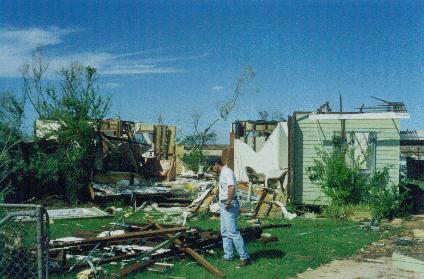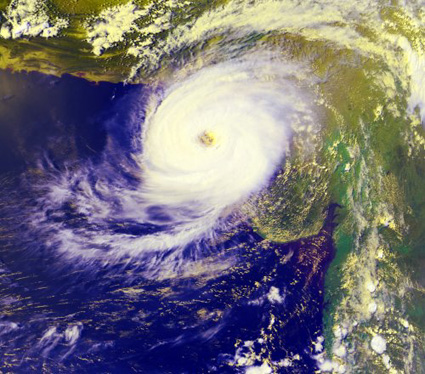|
|
|
|
Cyclones start over the oceans as a collection of storms in the tropics. The deepening low-pressure centre pulls in moist air and thermal energy from the ocean surface. The air lifts, and high pressure up in the atmosphere pushes it outward. Rotation of the wind currents tends to spin the clouds into a tight curl. As the winds reach get stronger and become gale force, the depression becomes a tropical storm. The mature cyclone is nearly a perfect circle, and its influence often extends over an area 800 km in diameter. |
|
Surface air spirals inward in a cyclone. It goes counterclockwise in the Northern Hemisphere and clockwise in the Southern Hemisphere. This makes a circle of about 30 km diameter that surrounds the hurricane's "eye." The eye is surrounded by something called an eye wall, where the inward-spiraling, moisture-laden air is forced high into the atmosphere. (This is the part of the storm with the heaviest rainfall and the strongest winds.) When the winds are finally spat out, thousands of metres above the surface, it creates the spiral bands of clouds easily identifiable in satellite photographs. |
 |
|
|
Cyclones, typhoons and hurricanes cause a lot of damage. Watch this video to hear more about cyclones. Click the start button to begin it playing. |
